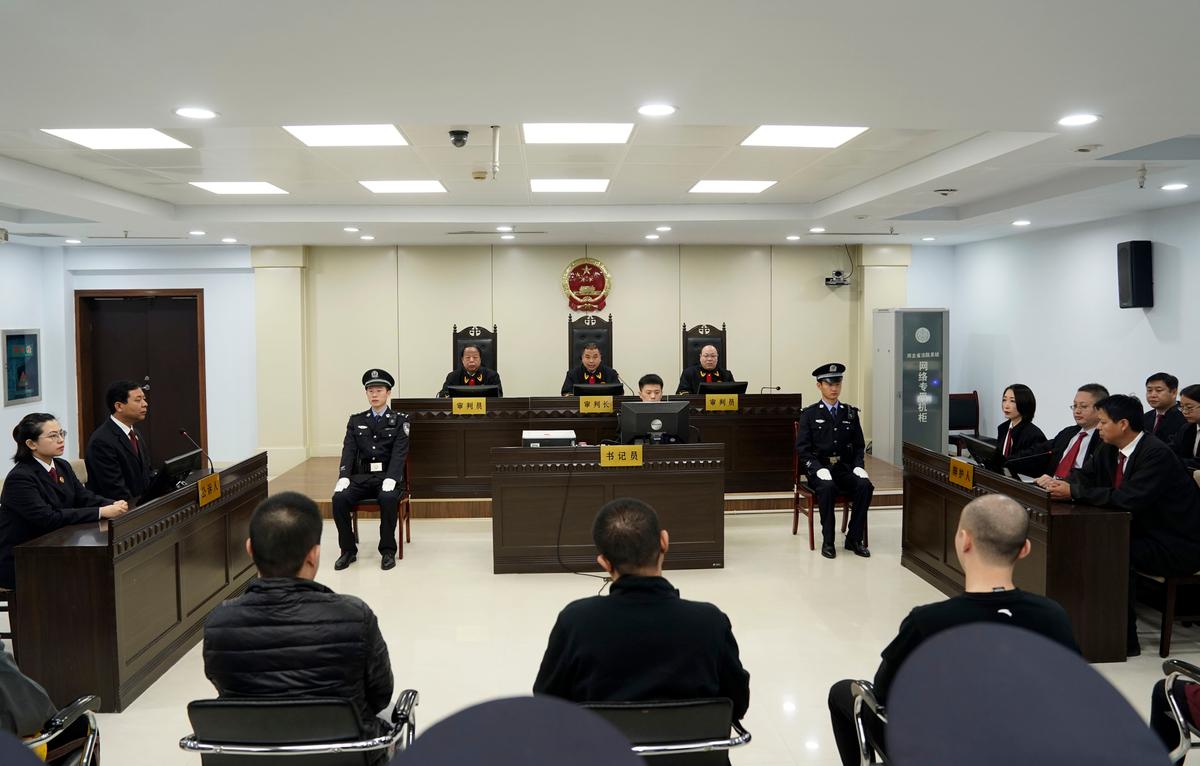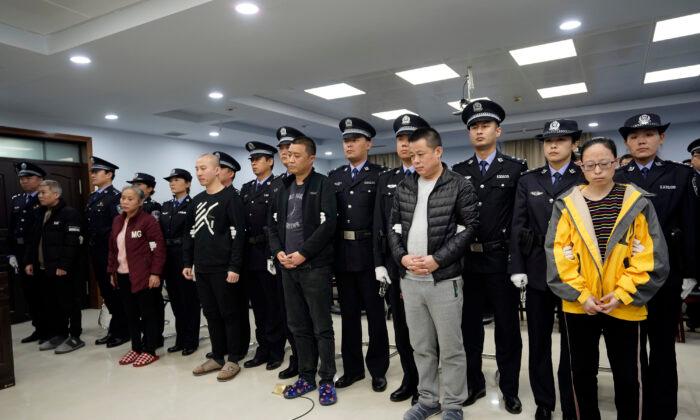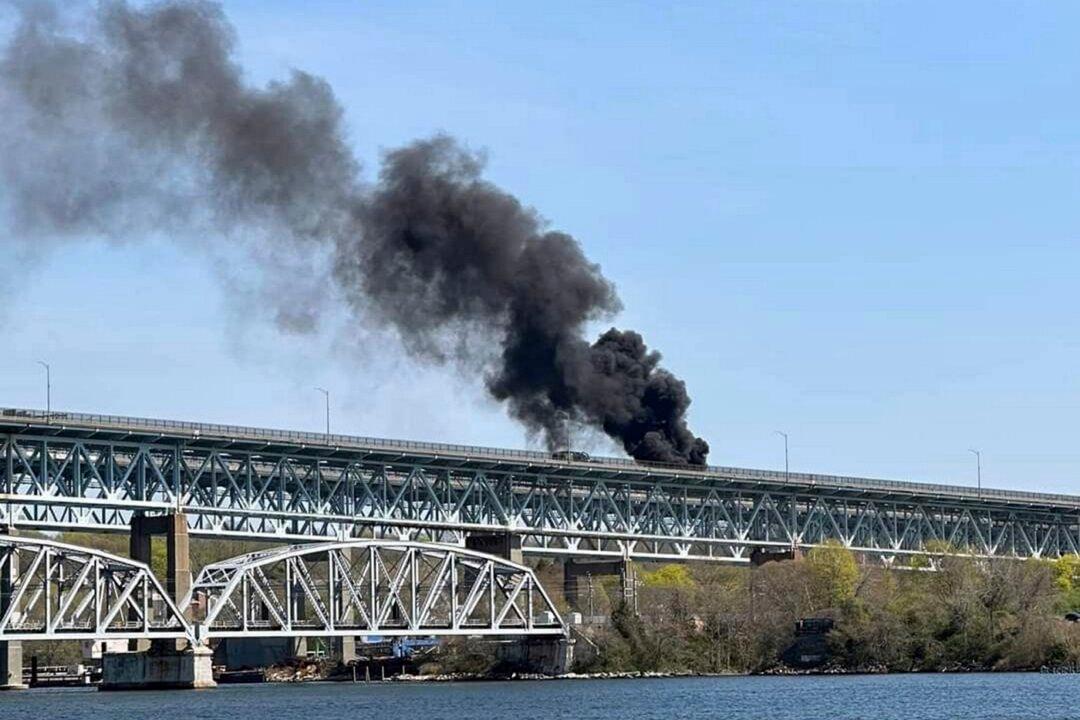XINGTAI, China—A Chinese court sentenced nine fentanyl traffickers on Nov. 7 in a case that is the culmination of a rare collaboration between Chinese and U.S. law enforcement to crack down on global networks that manufacture and distribute lethal synthetic opioids.
U.S. officials have been hopeful that China’s move earlier this year to outlaw unsanctioned distribution of all fentanyl-like drugs as a class will help constrain supply and make it easier to prosecute Chinese dealers.
Liu Yong was sentenced to death with a two-year reprieve, while Jiang Juhua and Wang Fengxi were sentenced to life in prison. Six other members of the operation received lesser sentences, ranging from six months to 10 years. Death sentences are almost always commuted to life in prison after the reprieve.
Working off a 2017 tip from the U.S. Department of Homeland Security about an online drug vendor who went by the name Diana, Chinese police busted a drug ring based in the northern Chinese city of Xingtai that shipped synthetic drugs illicitly to the United States and other countries from a gritty clandestine laboratory. They arrested more than 20 suspects and seized 11.9 kilograms (26.2 pounds) of fentanyl and 19.1 kilograms (42.1 pounds) of other drugs.
In form, the enterprise resembled a small business, with a perky sales force that spoke passable English, online marketing, contract manufacturing, and a sophisticated export operation, according to U.S. and Chinese law enforcement.
But the business had grave implications. Police photographs of the seizure show a dingy, chaotic scene, with open containers of unidentified chemicals and Chinese police in rubber gloves and breathing masks.
Liu and Jiang were accused of manufacturing and trafficking illicit drugs. The others were accused of trafficking.
Chinese officials said the Xingtai case was one of three fentanyl trafficking networks they are pursuing based on U.S. intelligence, but declined to discuss the details of the other cases, which are ongoing.

Austin Moore, an attaché to China for the U.S. Homeland Security Department, said the Xingtai case was “an important step” showing that Chinese and U.S. investigators are able to collaborate across international borders.
Moore said Chinese police identified more than 50 U.S. residents who tried to buy fentanyl from the Xingtai organization. Those leads prompted over 25 domestic investigations and have already resulted in three major criminal arrests and indictments in New York and Oregon, he said.
However, retired U.S. Air Force brigadier general Robert Spalding expressed doubt about the Chinese regime’s commitment to consistently enforce the laws in combatting the distribution of illicit drugs.
[embed]https://twitter.com/robert_spalding/status/1192804343277346816?s=21[/embed]
Trump said in his Twitter message on Aug. 1: “My friend President Xi [Jinping] said that he would stop the sale of Fentanyl to the United States – this never happened, and many Americans continue to die!”
Back in December 2018 at the Argentina G-20 Summit, Xi and Trump made negotiations, one of which was that China would enact policies to penalize the manufacturing and exporting of fentanyl.
‘Chemical Warfare’
Jeff Nyquist, an author and researcher of Chinese and Russian strategy, said China is using fentanyl as a “very effective tool.” He told The Epoch Times that the fentanyl trafficking ultimately leads to the infiltration of the United States.“You could call it a form of chemical warfare,” Nyquist told The Epoch Times. “It opens up a number of opportunities for the penetration of the country, both in terms of laundering money and in terms of blackmail against those who participate in the trade and become corrupt like law enforcement, intelligence, and government officials.”
China also uses the money generated by the importing of fentanyl to effectively “influence political parties,” according to Nyquist.
“It opens doors for Chinese influence operations, Chinese People’s Liberation Army, and intelligence services, so that they can get control of certain parts of the U.S.,” he said.

According to the U.S. Centers for Disease Control and Prevention, more than 500,000 Americans died of drug overdoses in the decade ending in 2017— increasingly, from synthetic opioids like the ones sold by the Xingtai network.
The American opioid crisis began in the 1990s, when the over-prescription of painkillers like OxyContin stoked addiction. Many people who became hooked on pain pills later moved to heroin. Fentanyl—an even more potent lab-made drug that raked in profits—then entered the U.S. illicit drug supply, causing overdose deaths to spike.





